After a production that sounds trickier than the Kessel Run, Solo: A Star Wars Story made it to the big screen in May in one piece, shedding new light on the galaxy’s greatest scoundrel: Han Solo. Both separate to the Skywalker saga and yet steeped in Star Wars lore, the film has plenty of secrets to dig into – both in the film itself and its making-of, with original directors Phil Lord and Chris Miller famously leaving the project near the end of the shoot and Ron Howard stepping in to finish the job. Empire sat down with Howard shortly before the film’s release to delve into the saga’s latest instalment in spoiler-filled detail on an Empire Podcast Spoiler Special (which you can find links to right here). Here are some of the major insights and revelations from the conversation – and be warned, this is of course spoiler central.
WARNING: CONTAINS MAJOR SPOILERS FOR SOLO: A STAR WARS STORY
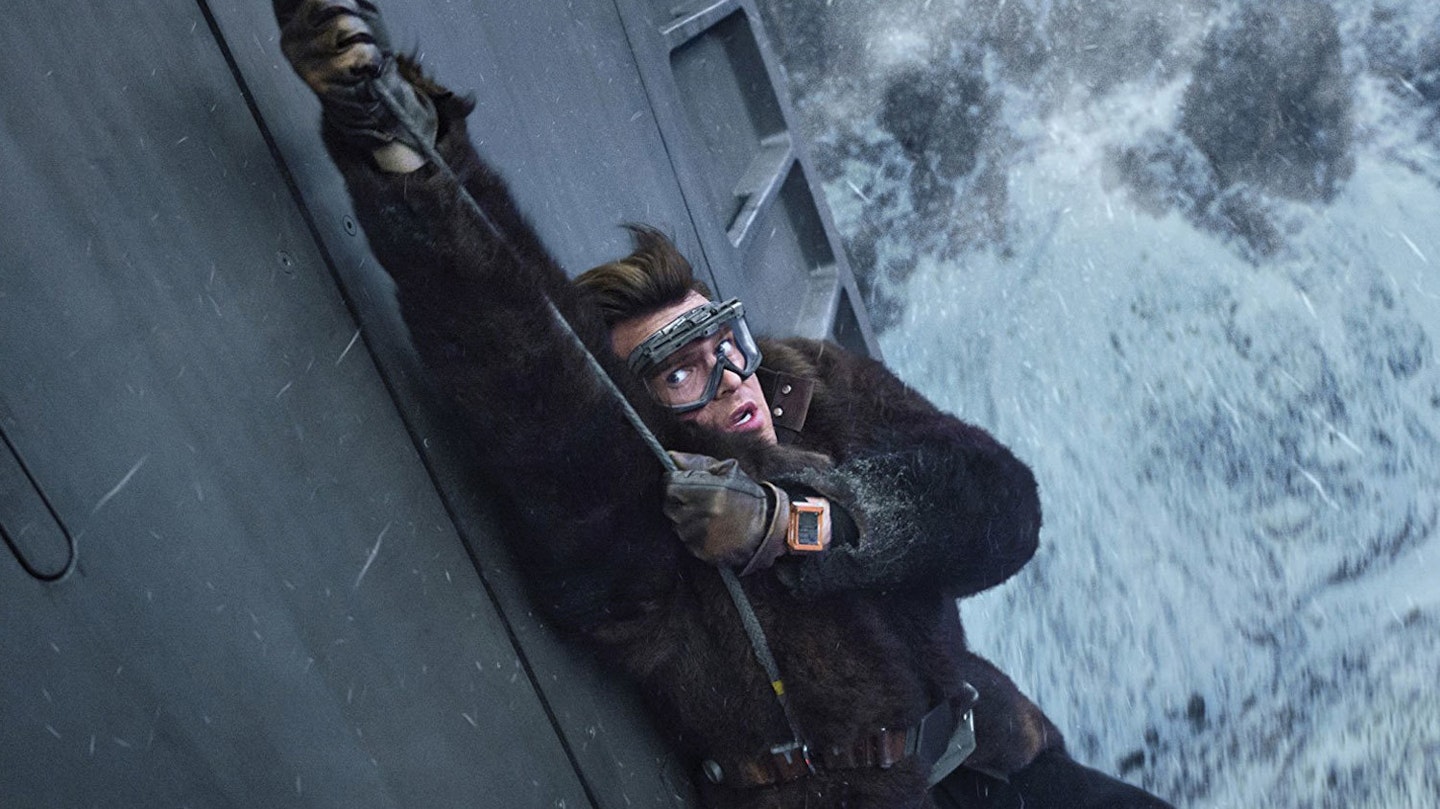
1) It’s not intentionally setting up more films – but a Lando movie isn’t off the cards

By the end of Solo, plenty of Han’s classic traits are established – there are hints of heroism in his scoundrel persona, he’s got the Falcon, and found a best bud in Chewbacca. But his romance with Qi’ra is unresolved, he’s yet to meet Jabba, and Chewie doesn’t have his bowcaster yet, prompting assumptions that a follow-up is all planned out. Not so, according to Howard, who says there’s “no concrete plan” for another Han Solo film as of yet, but also doesn’t rule it out. “It's been kind of a constant process of asking the questions – how might this have happened? How might have Han Solo been affected? What are the events that might have shaped his life?” he said, adding: “I think it does continue to beg questions. The fans seem enthusiastic, and so maybe there's going to be interest in exploring those."
Donald Glover’s hugely popular take on Lando Calrissian has already sparked an outcry from some corners for the story to continue with him at the centre – and Howard doesn’t deny that that could happen. “He's so entertaining, that's a real possibility,” he admitted. “All of this is in discussion, but it all depends on project-by-project development."
2) Ron Howard argued for Darth Maul being the Crimson Dawn boss
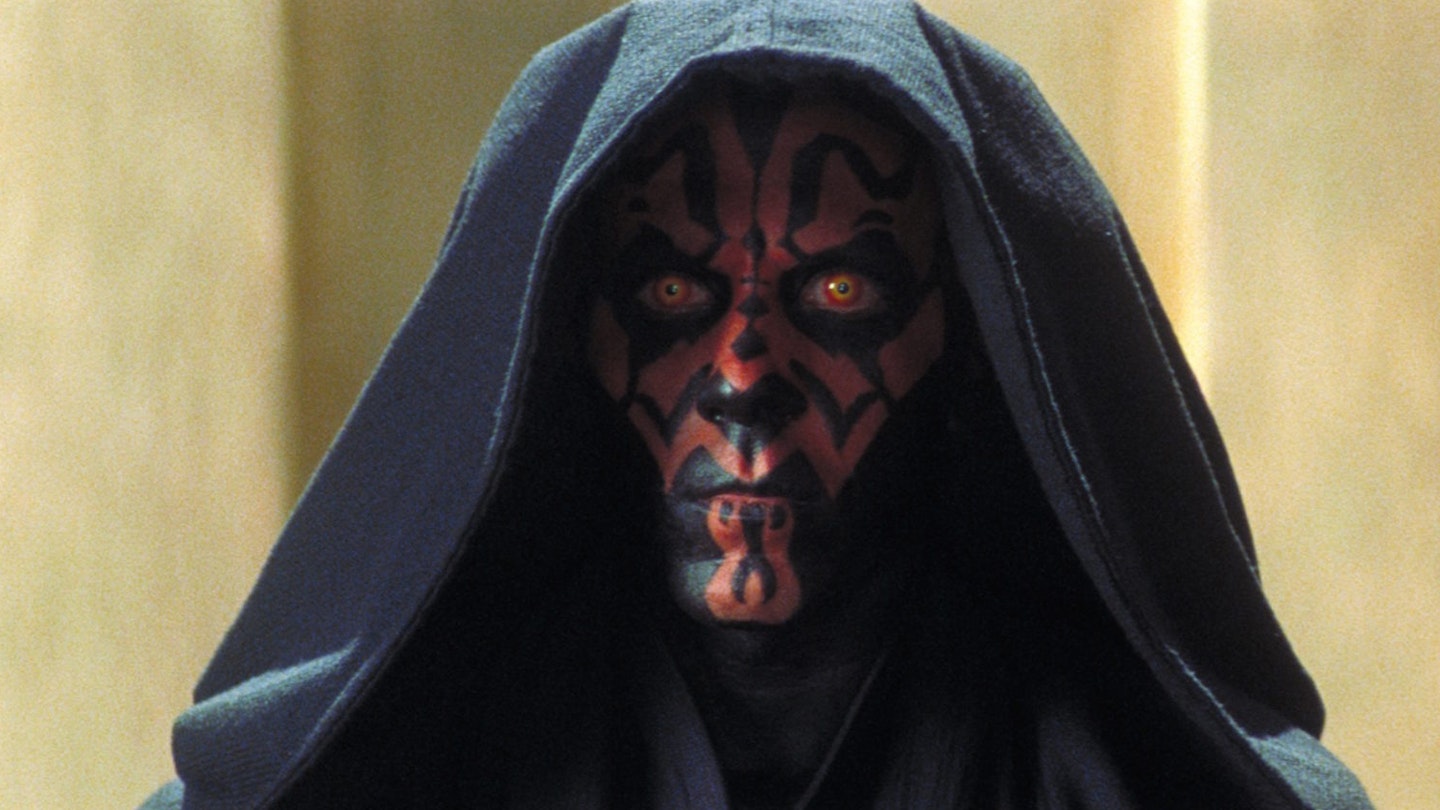
One of Solo’s biggest surprises is Phantom Menace baddie Darth Maul popping up as Crimson Dawn’s shadowy leader, looking a few decades older and sporting a nifty pair of robotic legs. The character’s not been seen on the big screen since 1999, though his survival was chronicled in Dave Filoni’s animated Star Wars TV shows. When Howard stepped into the director’s chair it still wasn’t decided who the big boss would be – but he was pushing for it to be Maul (no longer ‘Darth’). “They had a list of a few candidates, and they even talked about just inventing a new gangster boss because there are five Syndicates,” he explained. “I said, 'Maul, what happened to him?' I hadn't seen the animations but I knew more had happened with him. They told me the story and I said, well wouldn't that be cool? My 30-year-old son thinks that’s the coolest guy, and so I admittedly lobbied. It wasn't entirely my decision but I thought that was a pretty scary way to go and a way to give our third act a nice twist and a jolt of recognition and excitement. The first time I saw it with fans, I saw that it was a good call."
One of the other possible candidates was Jabba the Hutt – the big-shot gangster alluded to at the end of the film. "Jabba was on the list,” Howard confirmed, “but they kind of knew they didn't want to go that way because it would be sort of funny, and maybe a little bit too much like sequel-baiting."
3) Howard sees Qi’ra’s final motivation as tragic and altruistic
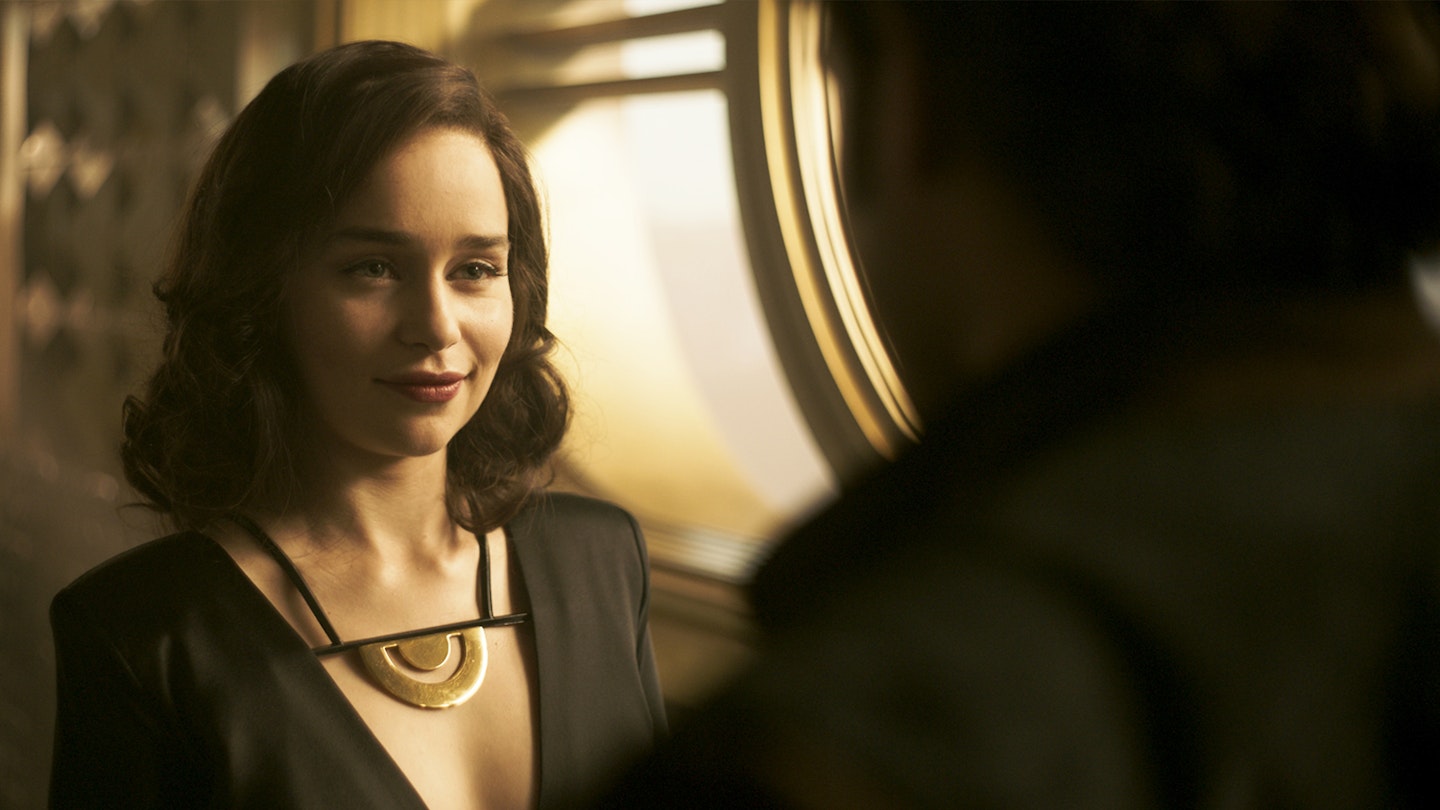
Instead of jetting off with Han in the Falcon at the end of the film, Qi’ra sticks around on Dryden Vos’ space-yacht for a quick space-Skype with Maul. The scene’s been interpreted by some as a power-grab move, but Howard sees it differently. "In my mind, she knew she couldn't run off with Han. It would be his death and hers,” he reckons. “She set him up to go, assuring him that she'd follow, but knowing she couldn't really. She had to clean this situation up as best as she could. I think she hoped she could report in and then disappear, but [Maul] trapped her. He said, 'Come to Dathomir and we're going to be working closely together', and you realise, 'Oh my god, she's traded one oppressive boss in for an even scarier dude'. In a way it fuels her ambition and puts her in a position of heightened power, perhaps. Or heightened danger. I thought it was kind of courageous for her."
4) The five crime Syndicates could be important going forward

Crimson Dawn is just one of five major crime Syndicates operating in this period of the Star Wars universe – and Howard reckons a rumble between the galaxy’s criminal gangs could fuel other plotlines. "Potentially one would think it might be kind of interesting to see what a war amongst the Syndicates looks like,” he ruminates. “There's nothing concrete there, but that's interesting territory. In what movie and through which character's perspective that might emerge... I think everybody feels like that's rich territory to explore in the movie universe."
5) Dryden Vos’ changing facial markings reflect his emotions
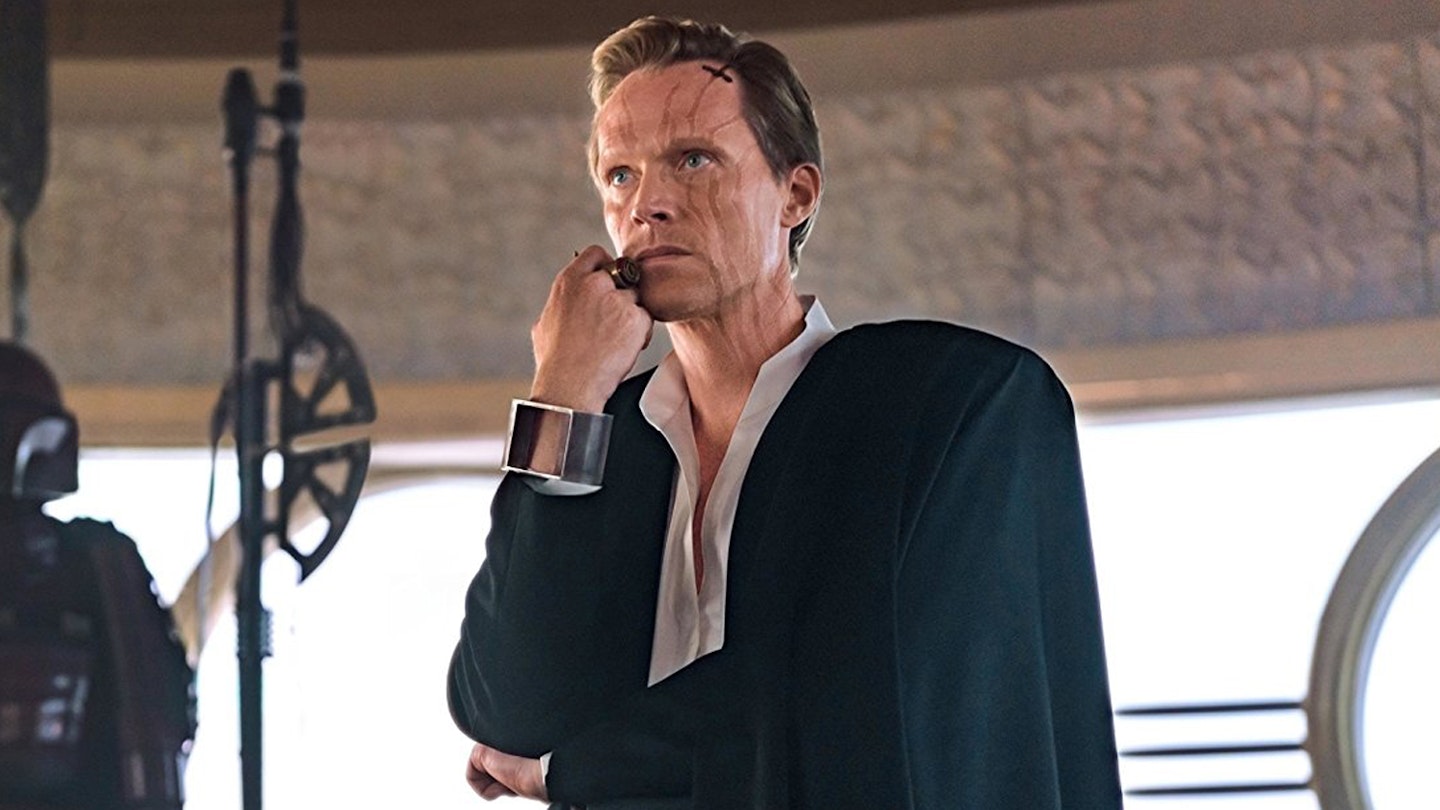
One of the characters we know changed considerably from Lord and Miller’s initial shoot is Paul Bettany’s baddie Dryden Vos. Not only was he originally played by Michael K. Williams, who was recast when unable to return for the reshoots, but the character was initially a feline alien creature. Bettany’s version is humanoid, but not entirely human – as evidenced by the markings (not scars) on his face which change to reflect his feelings. “The idea that the facial striations would intensify and diminish depending on his mood came after the [shoot] because Paul's performance was so mercurial and interesting in the way he would flare up and then be charming,” revealed Howard. “That was suggested a little bit in the script, but mostly generated out of Paul's creativity. He was also so handsome and charismatic that we wanted to make him a little scarier, and actually went back and added the scene where you can see him hands-on killing a governor […] He's like one of those animals that changes colors and can't help it, like a mood stone."
6) George Lucas was already keen to explore Han Solo’s youth
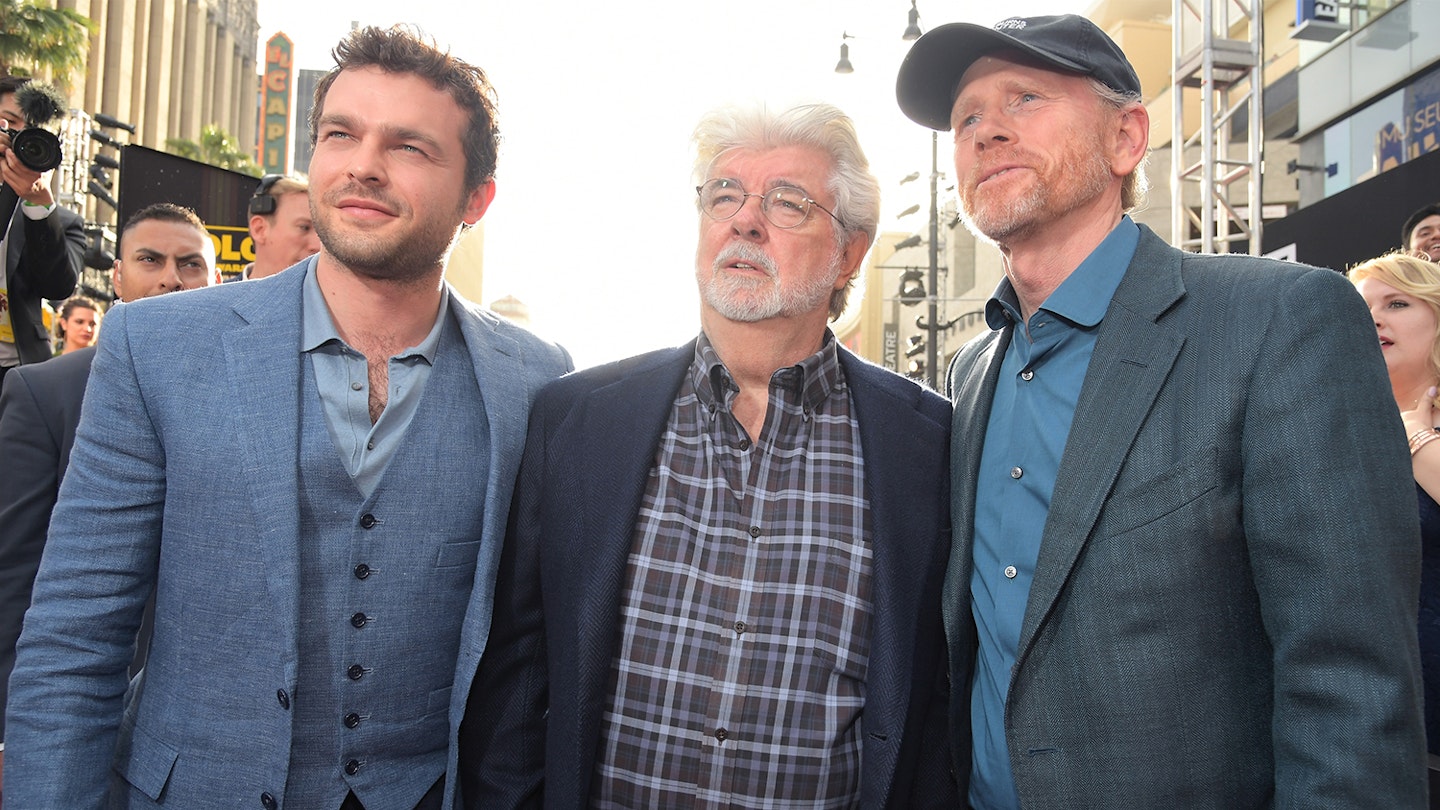
The idea of explaining Han Solo’s origins might not please some Star Wars fans, but George Lucas long had designs on it. "It was hatched before Disney acquired Lucasfilm,” Howard confirmed. “When Kathy Kennedy first came on board and George Lucas was interested in finishing the saga and possibly exploring other avenues as they had with the animation, [screenwriter] Larry Kasdan came from a meeting and the thing that Larry said and George immediately agreed with is, ‘young Han Solo’ – that's a movie character, that's a movie hero. And yes, we know he's going to survive. But don't you always kind of know that the hero's going to survive in these swashbuckling movies? We know that he's full of adventures, he had to have been."
7) Warwick Davis plays more than one role

One Star Wars regular who shows up is Warwick Davis as one of Enfys Nest’s crew – rumoured to be a reprisal of his minor Phantom Menace role Weazel – but Howard reveals he did more than just that. “Warwick is a kind of natural contributor, he's almost like an advisor when it comes to a lot of the droids and a lot of the creatures. In things like the Sabacc game, Warwick appears in it [and] his daughter is also a character, he's also working with the puppeteers. In the droid rebellion he played a character and also helped with some of the behaviours of the droids. He's really a secret weapon there."
8) There’s still hope for that Willow continuation
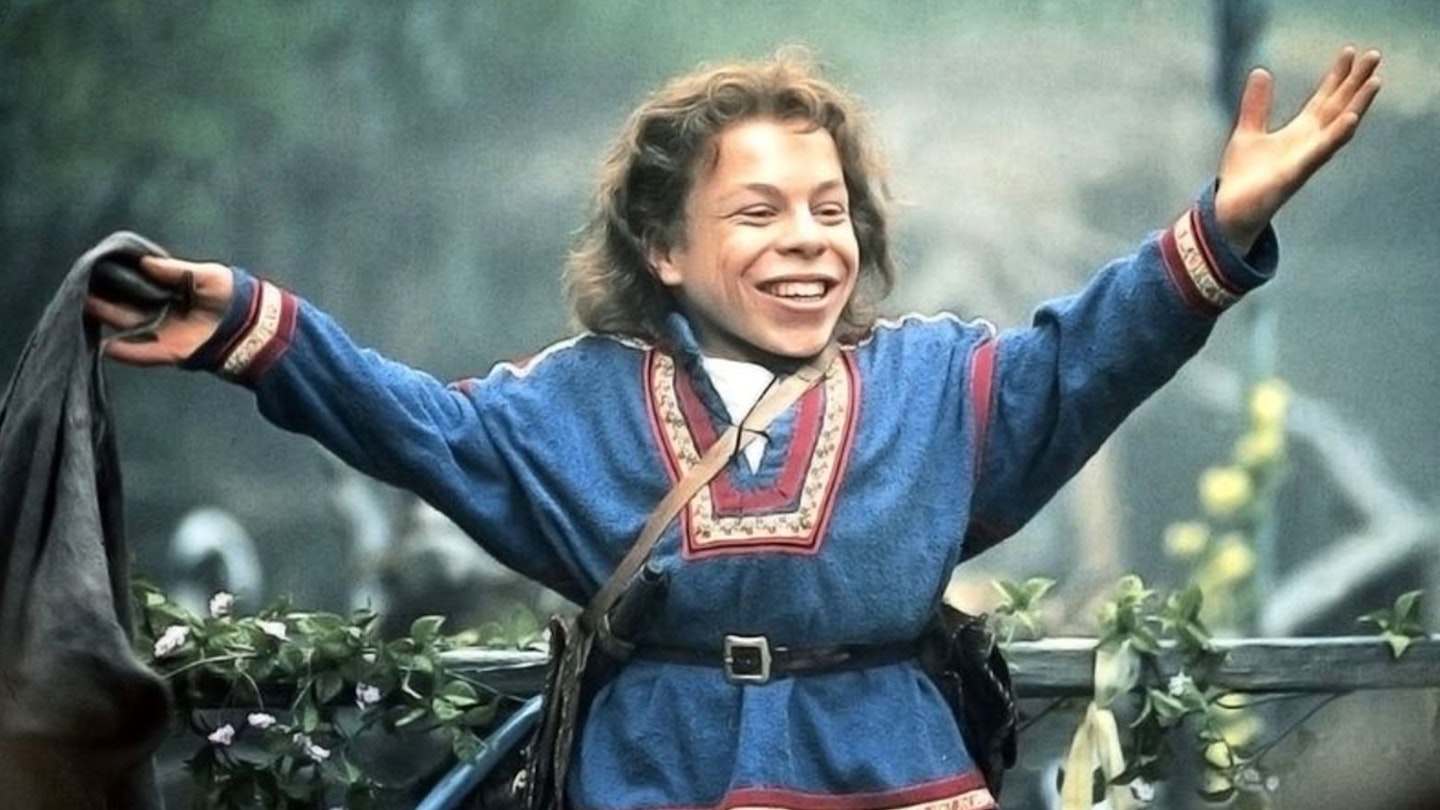
Of course it’s not Howard’s first time directing Davis – the pair worked together on 1988 fantasy film Willow. There’s been talk of a follow-up, which Howard revealed they’re still pursuing, even if things haven’t moved much further forward. "We're hoping to develop a television version of Willow and take advantage of [Warwick Davis’] charisma, with Warwick in it. That's early- nothing's been written, it's just a hope."
9) L3-37 might not be gone for good
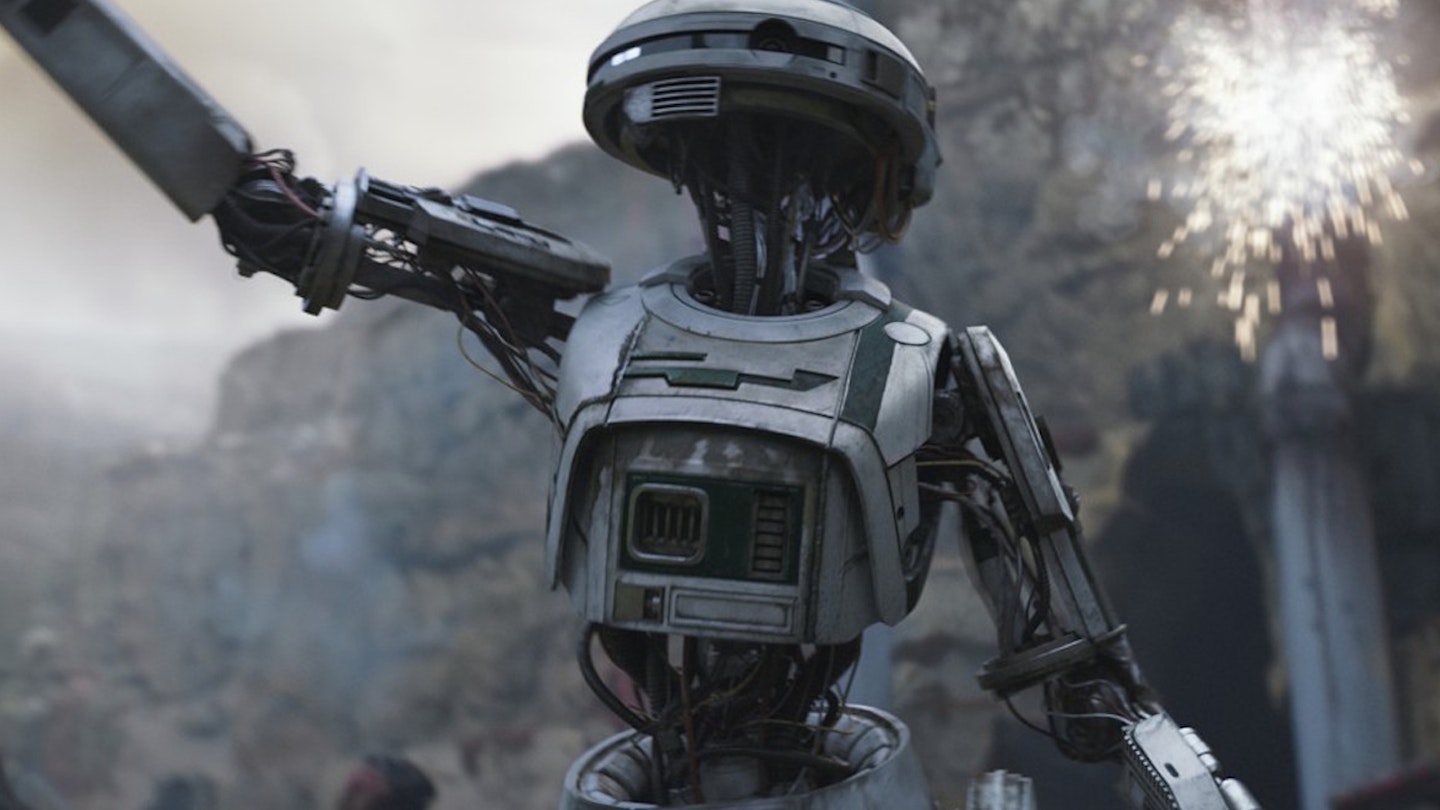
Lando and his sassy robot L3-37 clearly have a, er, close relationship, and after her death her expert navigation system is uploaded to the Falcon – at that point still in Calrissian’s possession. In losing the ship to Han at the end of the film, Lando also loses what remains of L3 – but not necessarily forever. "Is there some way that Lando could rebuild L3? One would hope, wouldn't you,” ponders Howard. “Maybe the Falcon gets to keep a bit of that super-intelligence but Lando could maybe, somehow, someday find his way to reconstructing L3."
10) There was plenty of improvisation on Ron Howard’s shoot…
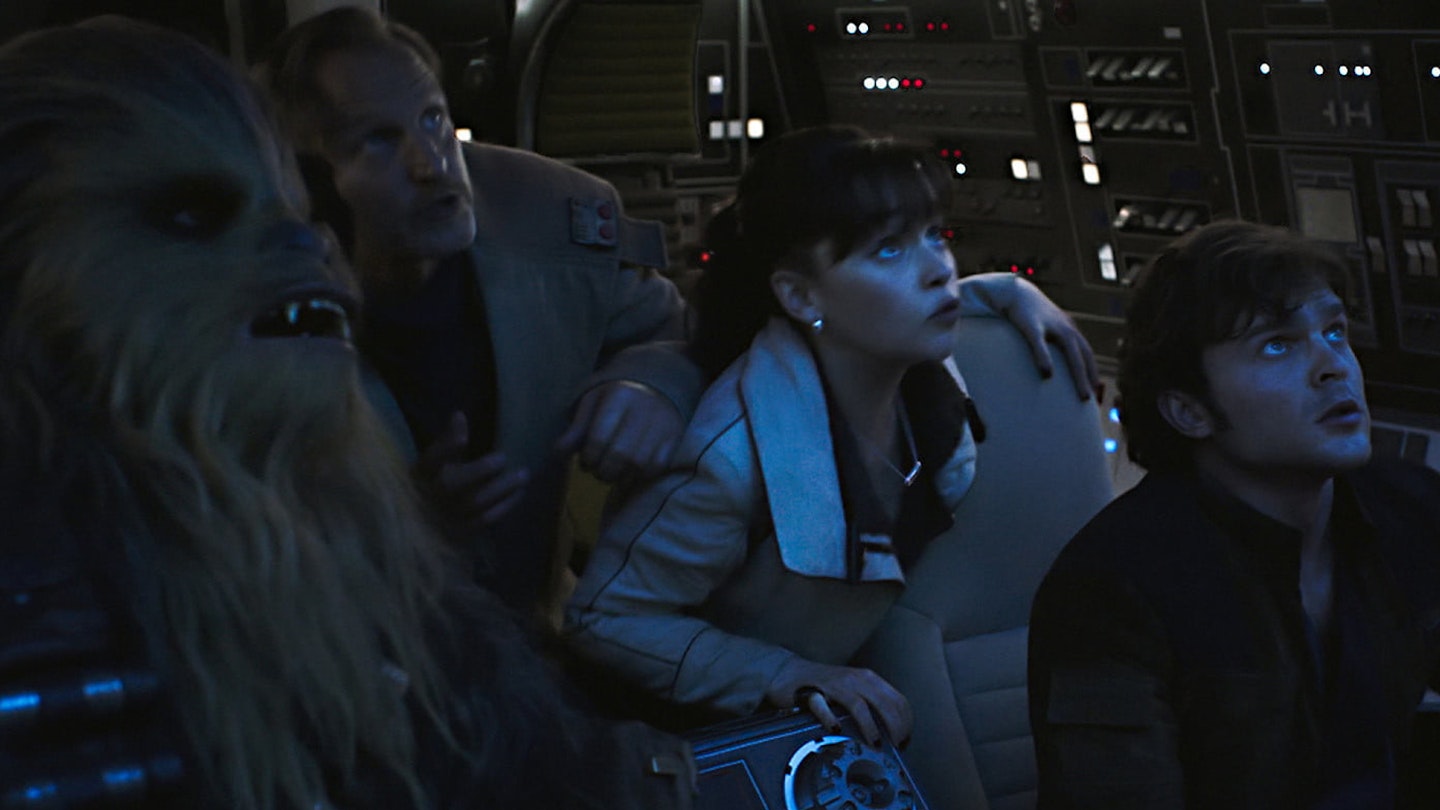
Speculation has swirled over the creative differences that led to Lord and Miller leaving Solo, with some reports citing their preference for improvising and ad-libbing scenes as a sticking point. It’s a rumour that Howard himself says is “so not true”, adding that his own time shooting the film involved deviating from the script. "The reality is Phoebe [Waller-Bridge] was ad-libbing a lot of her stuff, so was Donald [Glover]. Larry and Jon [Kasdan] were delighted by all that, so it's not like they're writers that were insisting that everybody stick to the letter of the script,” he clarified. “They appreciated the contributions of the cast."
11) …and some of the funniest scenes came from him
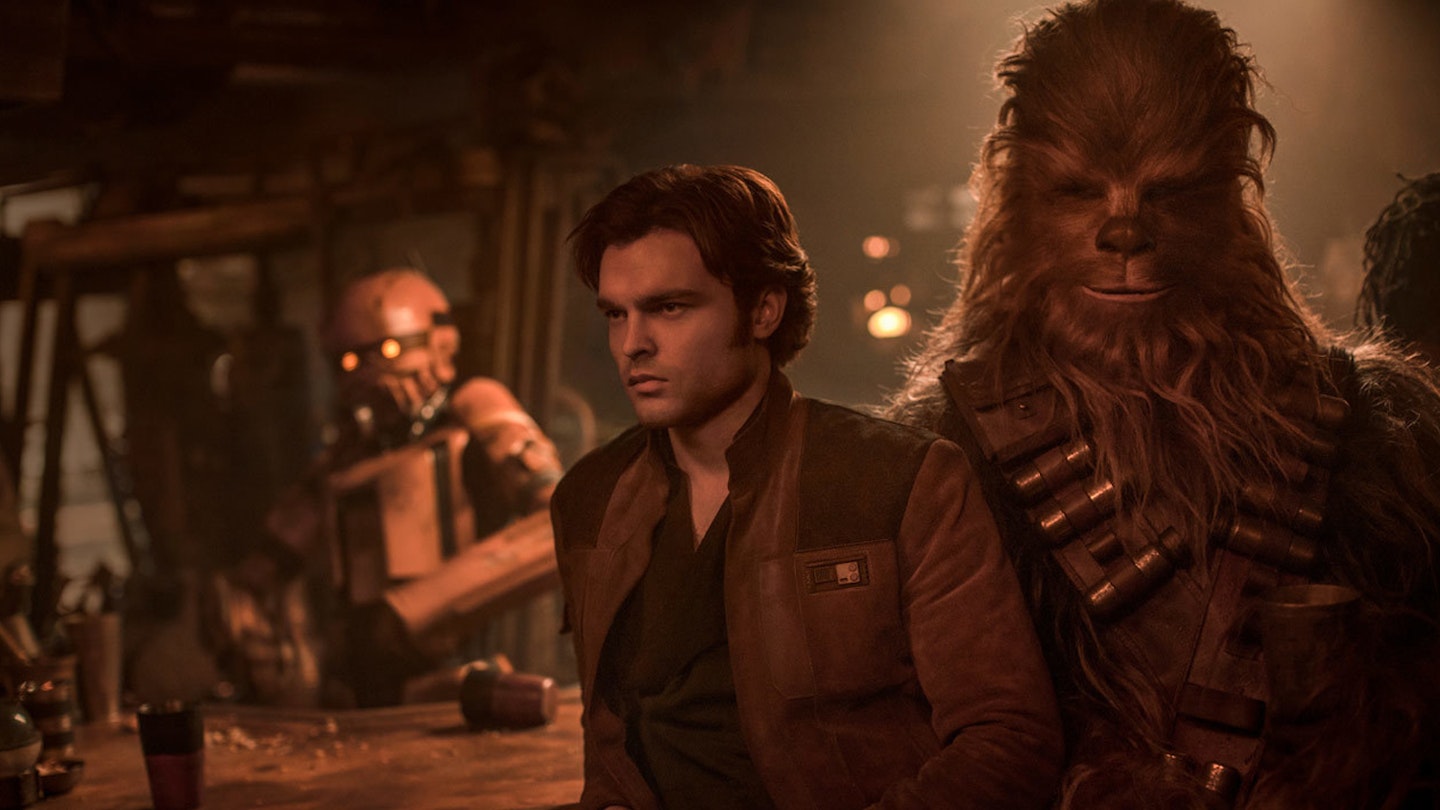
It would be easy to assume that the most overtly-comedic scenes in Solo came from Lord and Miller, known for their humourous improvisational riffs, but some of the film’s stand-out laughs derived from Howard’s shoot. The scene between Qi’ra and L3 in the Falcon’s cockpit is one such example. “Emilia played it brilliantly,” says Howard, “her reaction [to L3's "it works" line], she was right there with the audience." Then there’s the scene where Chewie steps into the shower with Han. “I wanted to heighten the friction between the two of them as these guys learn to trust one another. He's very comfortable with himself is Chewbacca, and he doesn't much give a damn how you feel about it, or how Han Solo feels about it, particularly at that stage of the movie. It seemed like a really funny fresh idea. We were looking for as much humour as we could generate."
12) Harrison Ford was more positive than usual about the film
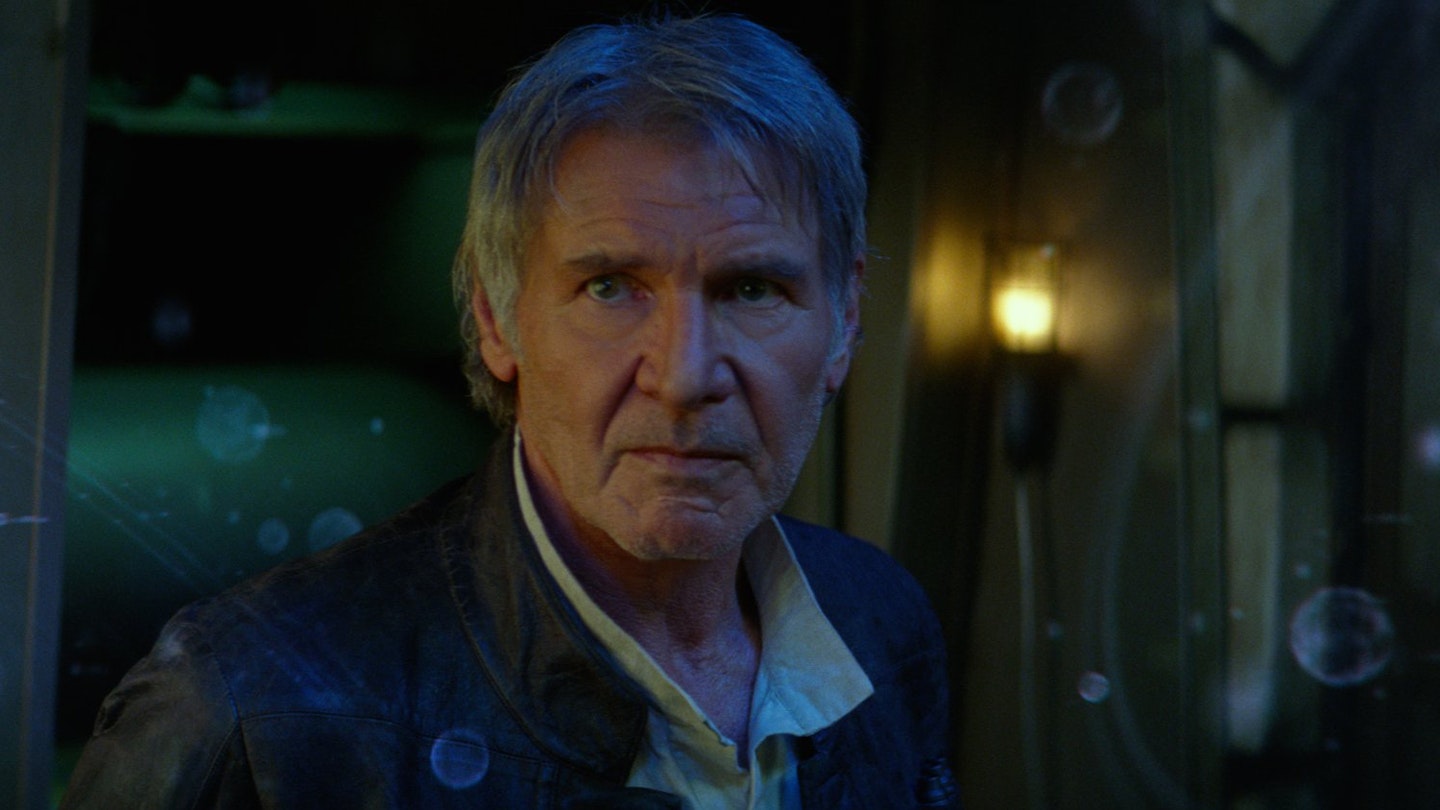
Actor. Icon. Impressive carpenter. Harrison Ford is all of these things, but he’s not exactly the most outwardly cheery or ebullient character – making it all the more satisfying for Howard and Alden Ehrenreich that he was so upbeat about Solo after seeing it. “Man oh man, when Harrison Ford called me and said, 'I saw the movie and it's really great'… I mean Harrison is never effusive. He can be complimentary, he can be kind, he can be all those things, he's never effusive, he was so pumped up,” Howard recalls. “He was so happy and he said, 'Alden did exactly what he had to do – he made it his own, but he really understood the spirit of the character, and I'm really happy for him.'”
13) The nature of the Kessel Run changed during production
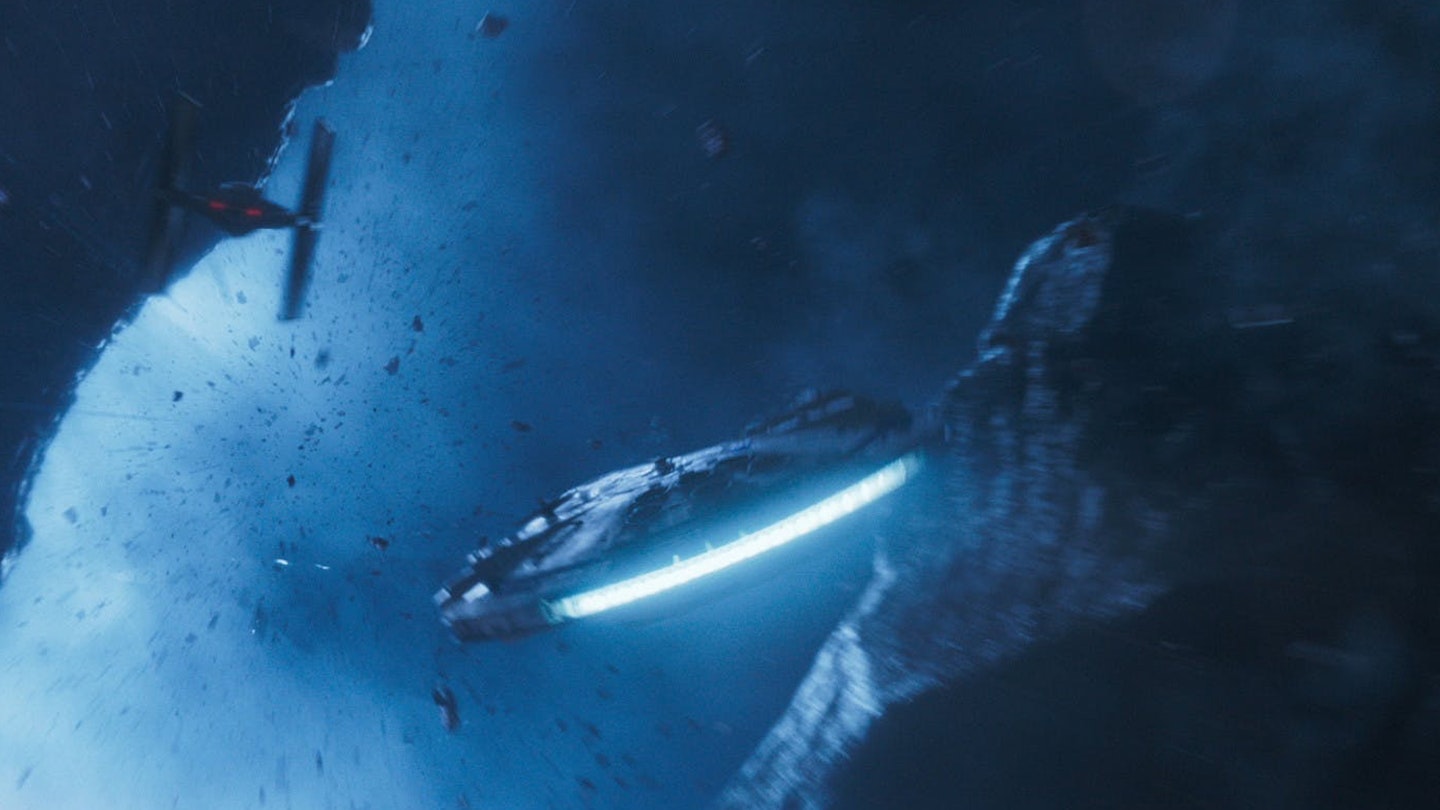
For the last 40 years, all we’ve known of the Kessel Run is that Han did it in the Falcon in less than 12 parsecs. In Solo we learn that it’s a treacherous trade route swirling with asteroids, a black hole, and a big tentacled beastie (fun fact: that thing’s called a summa-verminoth). But it wasn’t always that way. "The monster wasn't around when I arrived,” Howard revealed. “It was a new addition. There were a lot of the elements of the Kessel Run that were scripted and already previs-ed and so forth, but there was a lot of ongoing evolution of the story. Even using the Coaxium as a factor in the ultimate escape was something that just evolved through this incredible process […] I was in and out of the Falcon three times shooting new versions to facilitate new fun ideas that we were getting about the sequence. Directorially I just had a blast […] I didn't expect to have so much fun working on the action set-pieces."
14) The escape pod was deployed differently in an earlier version
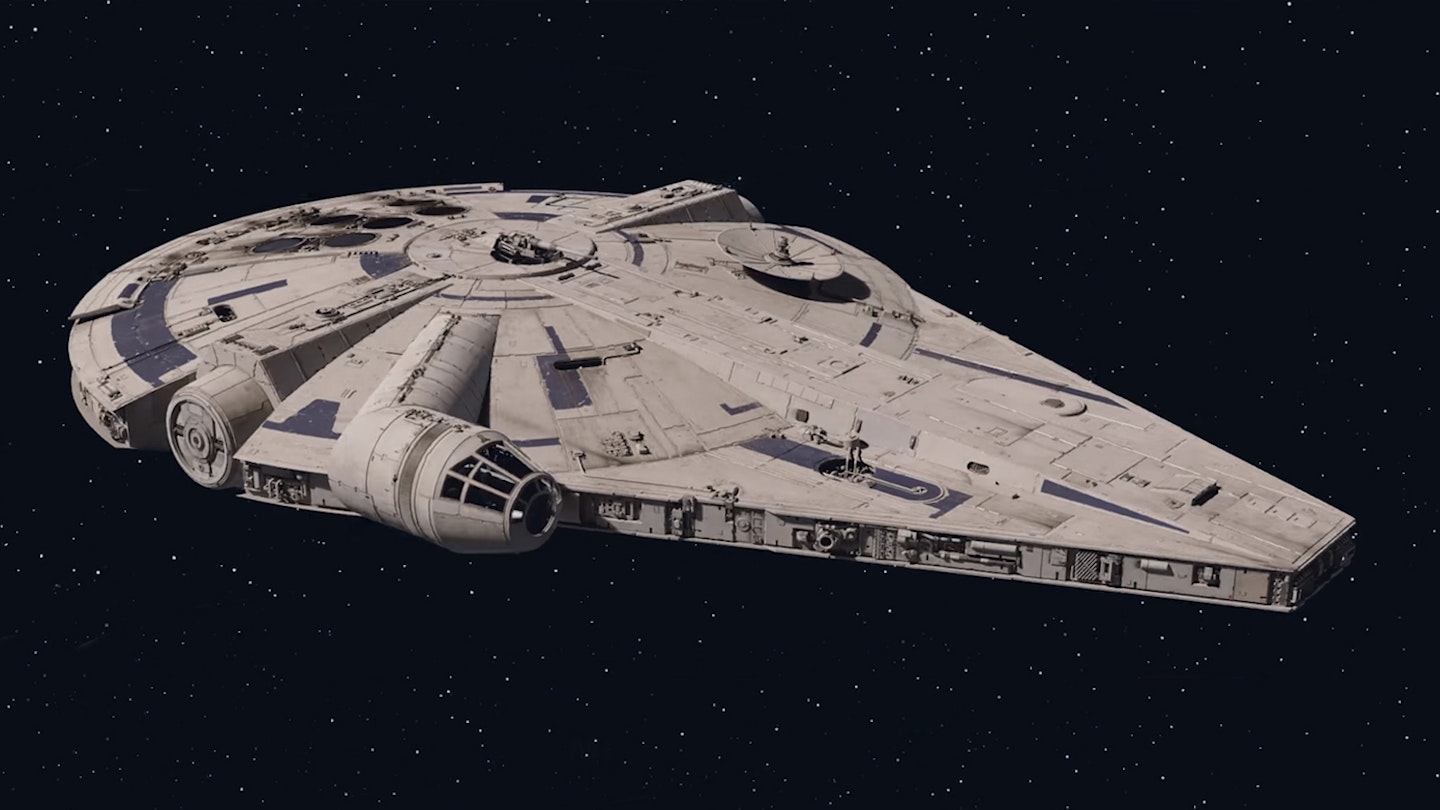
The key difference in the Millennium Falcon’s new (old) look in Solo is the filled-in nose cone, revealed to be an escape pod which Han and crew deploy to distract the summa-verminoth. Originally it was used in a different part of the Kessel Run. "It had more to do with the TIE fighters and it happened earlier, scraping along the carbon-bergs and things like that,” explained Howard.
15) Tom Hanks wanted to cameo
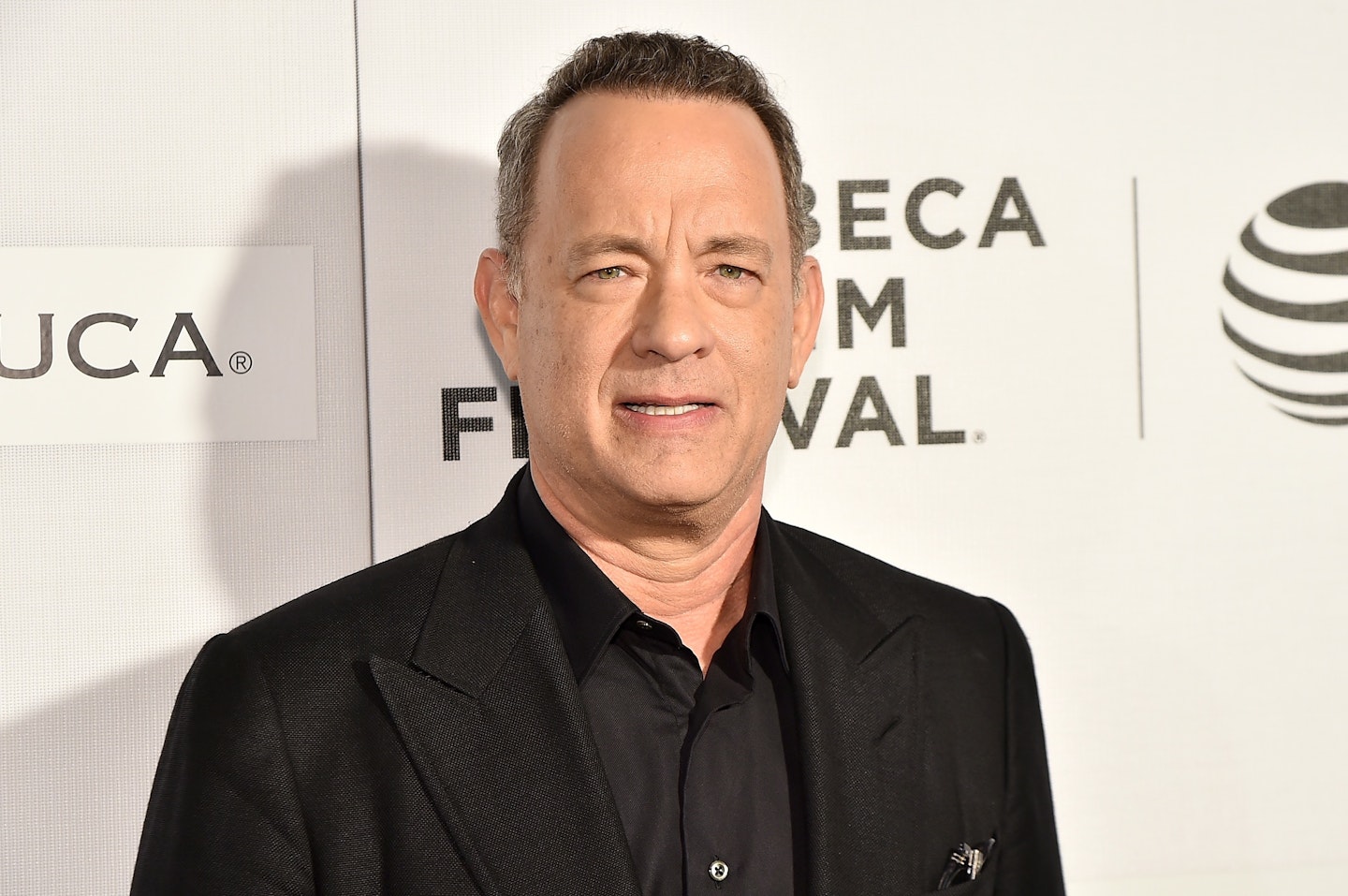
Ron Howard has teamed up with Tom Hanks on plenty of movies – the Robert Langdon trilogy, Splash, and Apollo 13. He could have had a secret appearance in Solo too, but it didn’t come together in the end. "Tom Hanks wanted to be a stormtrooper, but I couldn't get him. He wasn't available,” he said. “That would have been great. I don't even know if he really meant it, but he said that he'd love to come and be a stormtrooper but it didn't quite ever happen. Maybe next time."
Solo: A Star Wars Story is out in UK cinemas now. Listen to the full Ron Howard interview on the Empire Podcast Spoiler Special here.
